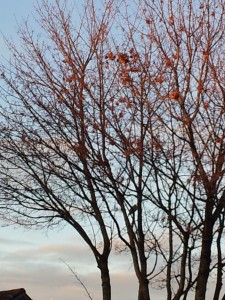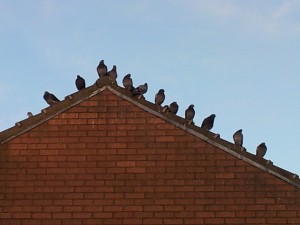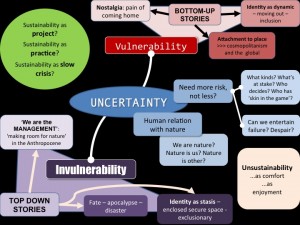Sustainability is not a word but a way of becoming. It defines the unity of being between humans and all other life on Earth. It is the manifestation of 4500 million years of evolution which reveals that it has taken some million years of human existence to recognise. In evolutionary terms the Earth is in its old age, with about one billion years to go. Arguably even if humans genuinely embrace the sustainability perspective it is unlikely that they will exist in any recognisable form in a million years from now. In any case the Earth will become uninhabitable from a dying and expanding sun in 300 million.
We face a century where we either learn to become an integral part of an evolving nature or we will cause great suffering for more than three quarters of our brethren. Over half are afflicted today. Yet our inabilities and insensitivies to change their plight is a reflection of our imperfect humanness.
The Cardiff seminar showed us that it is indeed possible to deploy art and creative expression to address these huge questions. Indeed it may be the case that it is primarily through these expressive media that we can gain the discussion space and intellectual wholeness to re-establish human empathy with present and future generations and all life on Earth.
What I learnt was that challenging films and visual art can offer a very powerful way of approaching the world we would like to see for our children to grow up in. I am a great believer in the art of conversation where younger and older people engage in a learning exchange over what values and ways of living and consuming should be adjusted so that the next generation can live more freely.
If such a set of conversations were to be connected to art and to videos then I feel we could begin to create a basis for genuine transformation of society and politics so as to reclaim democracy and to open up learning into an interactive basis of conversations and progressive dialogues. I would like to think that this process would be led by 16-19 year olds as they are not the “next generation of leaders”. They are the leaders of today.
So I make my plea. Please liberate the creative talent of current young adults and enable them to converse with their next generation to find a common pathway, doubtless of braided rivers joining and separation, but running on a common course, so we can find connecting rivulets through which to share our confidence and learning.



